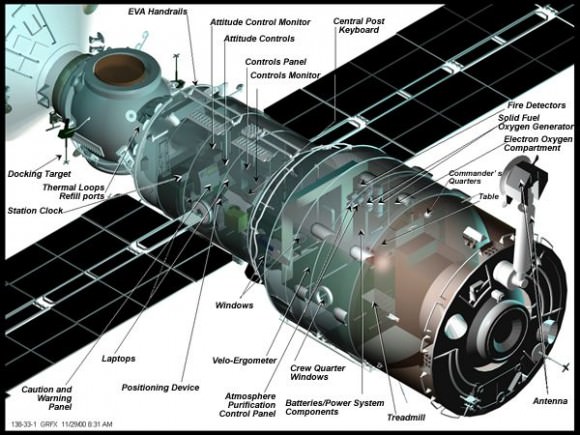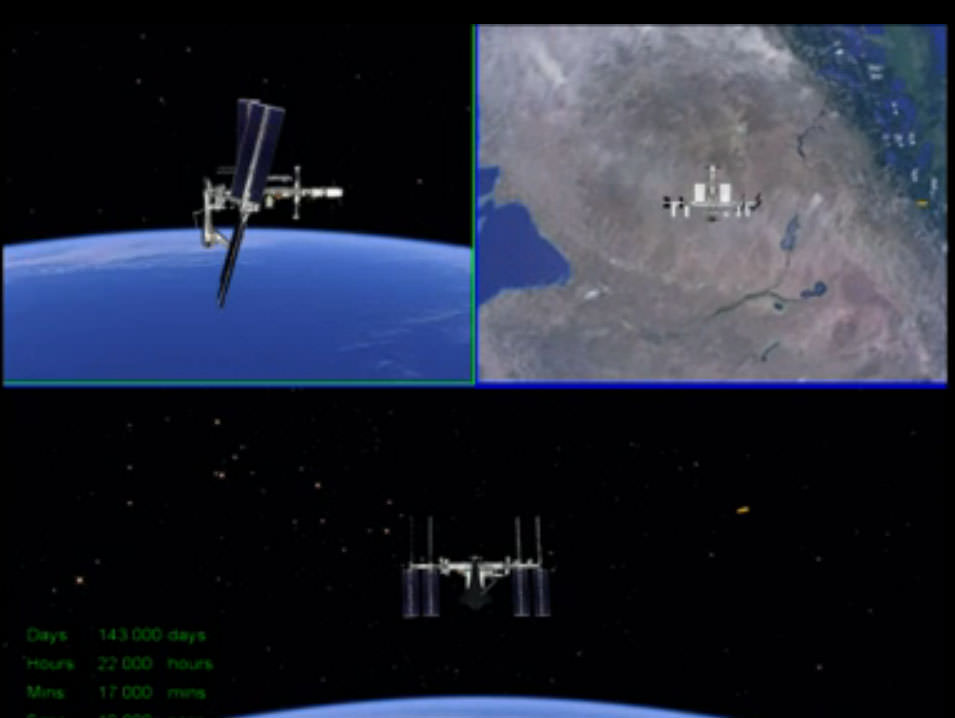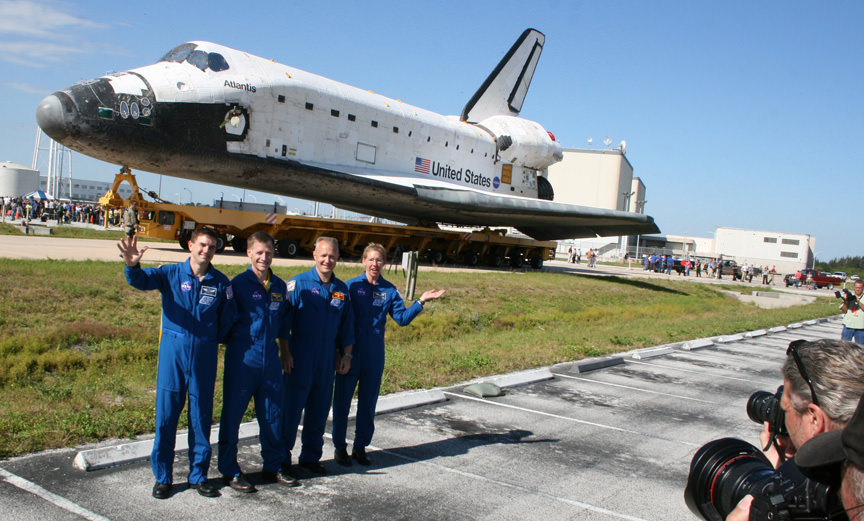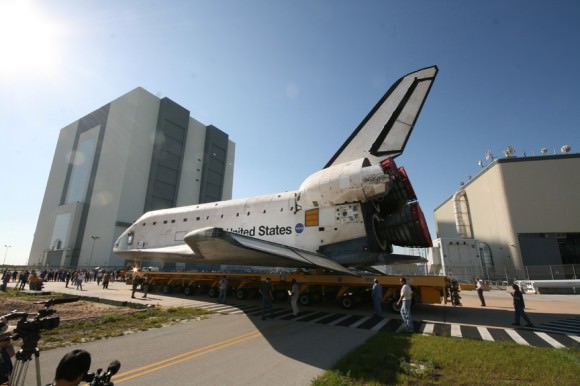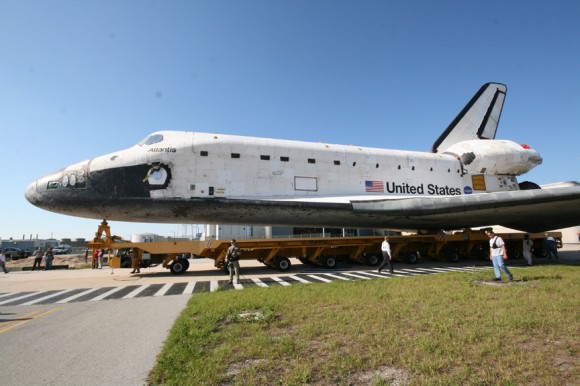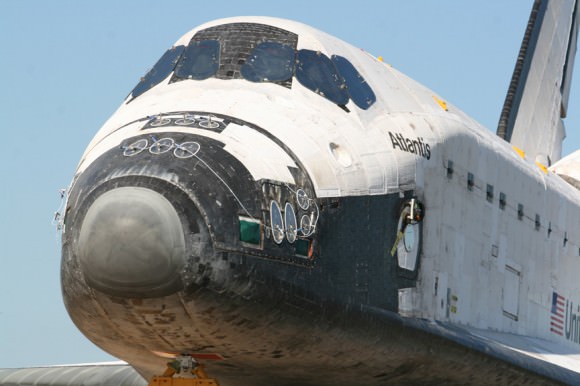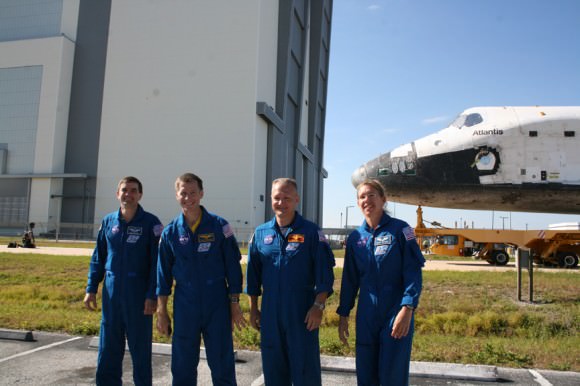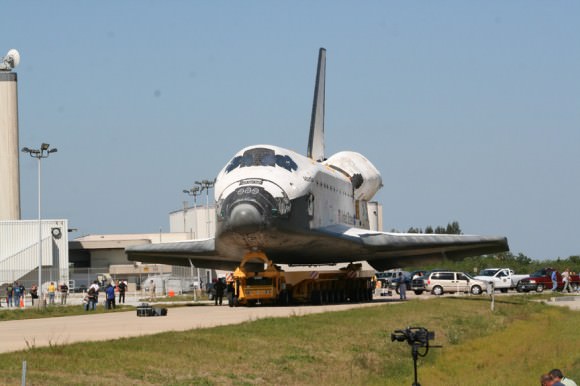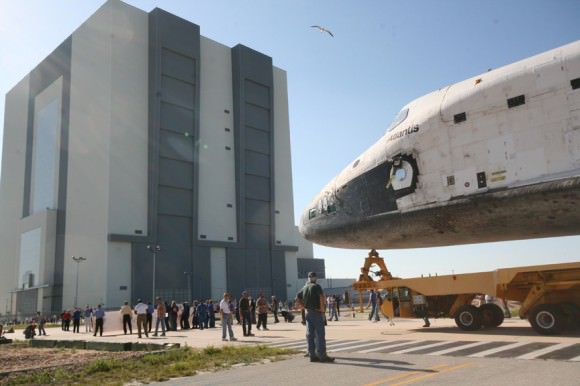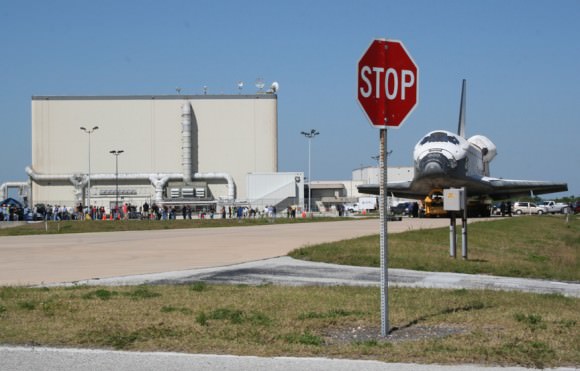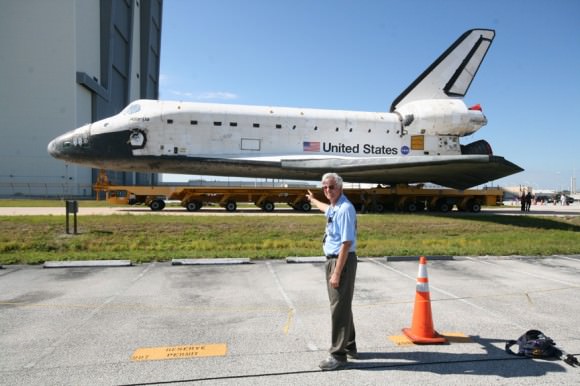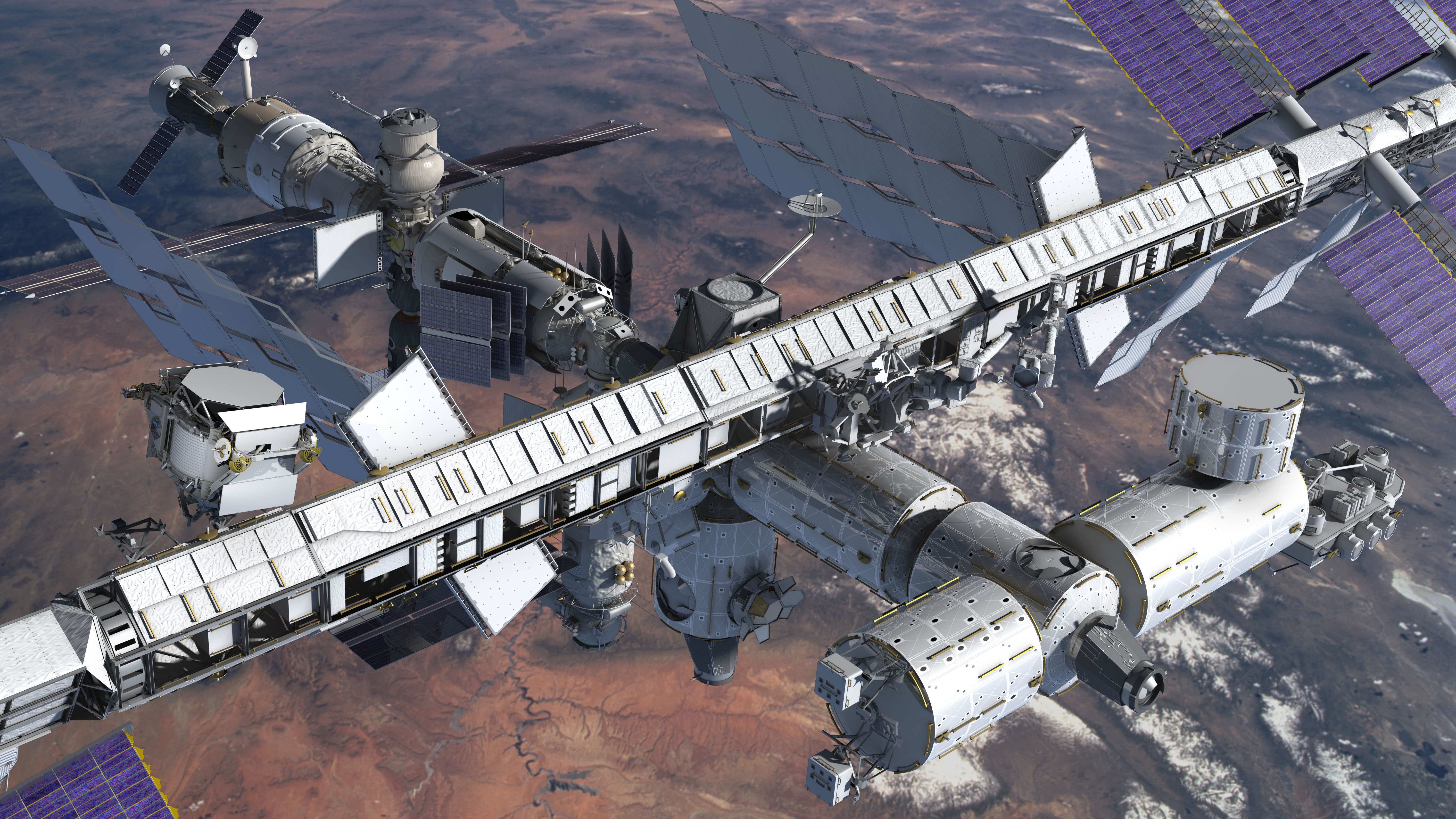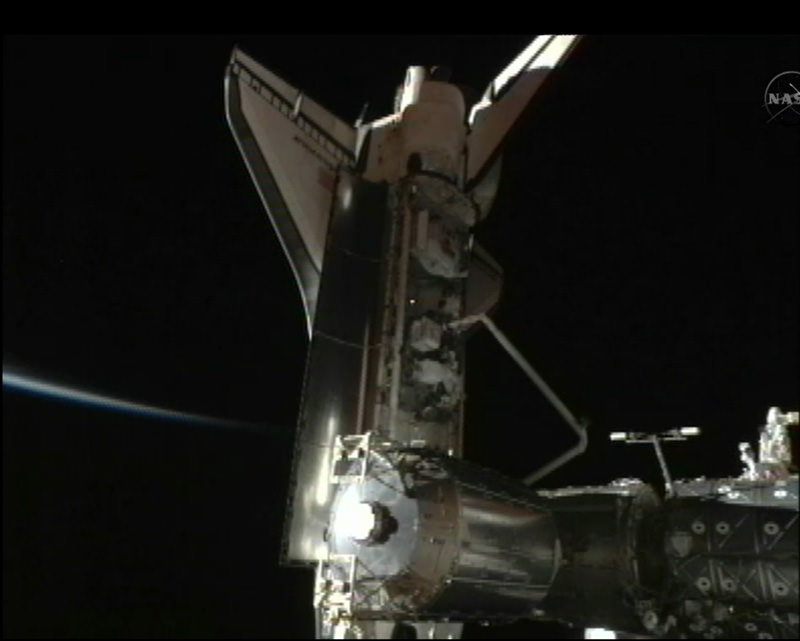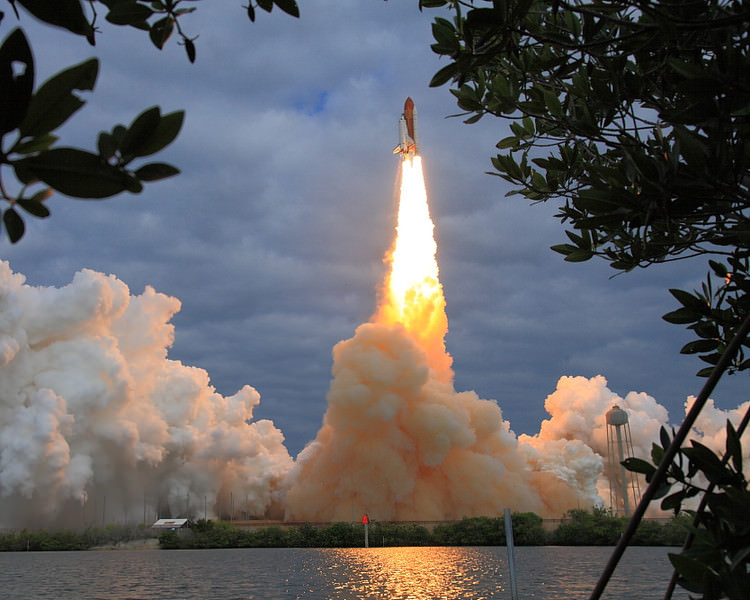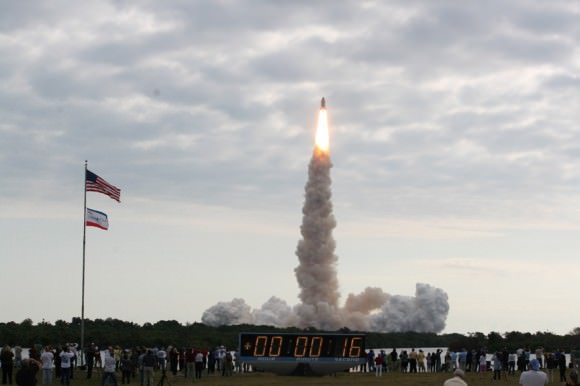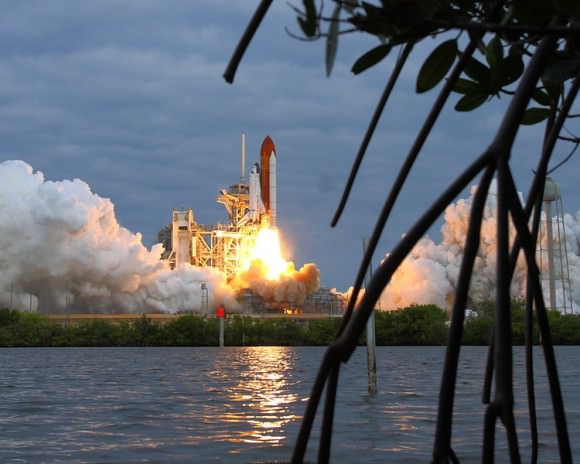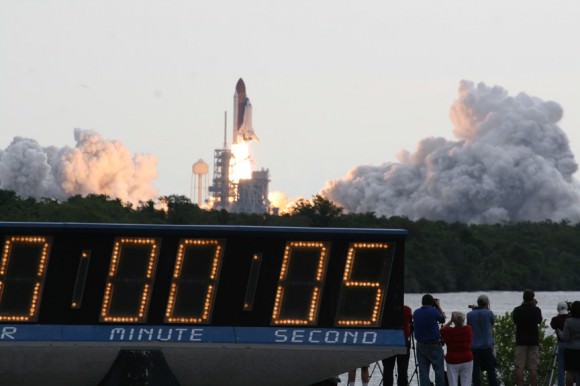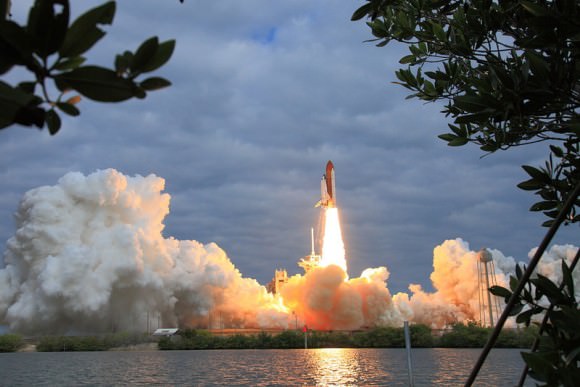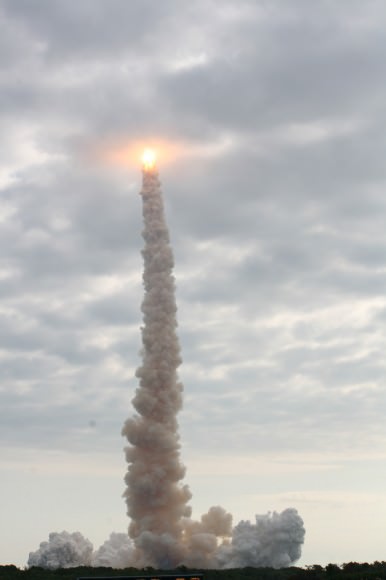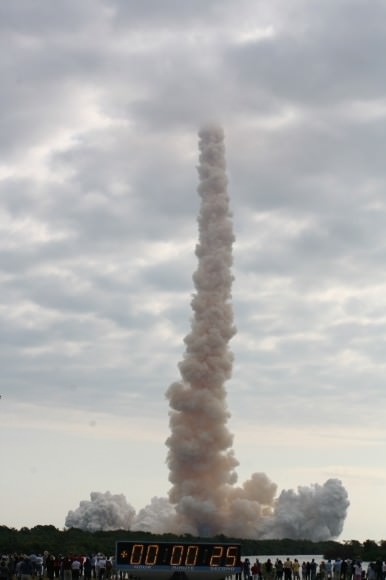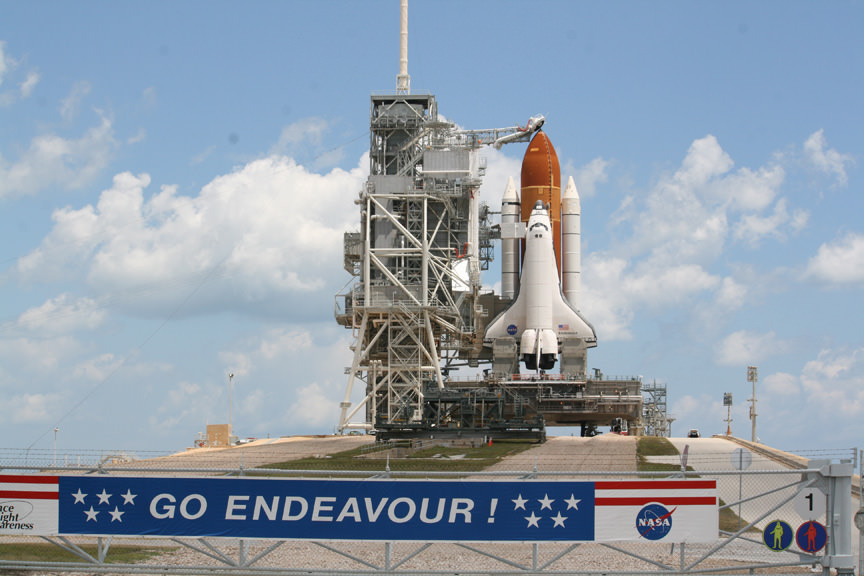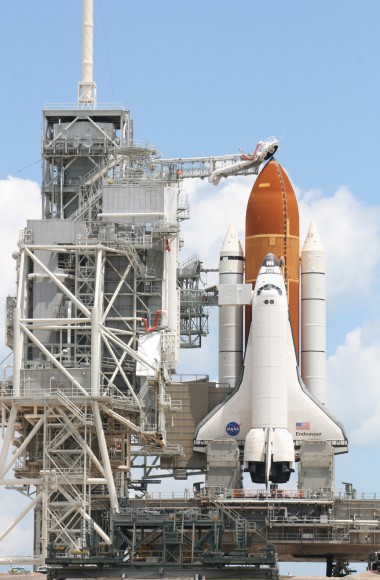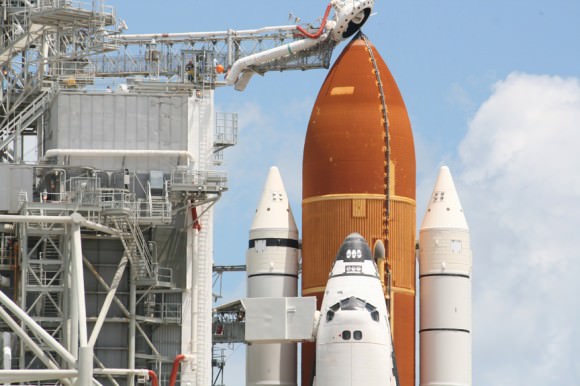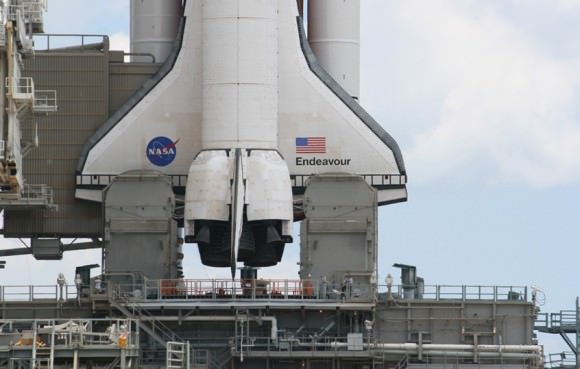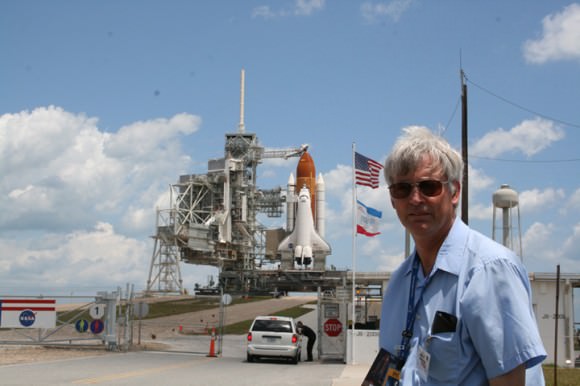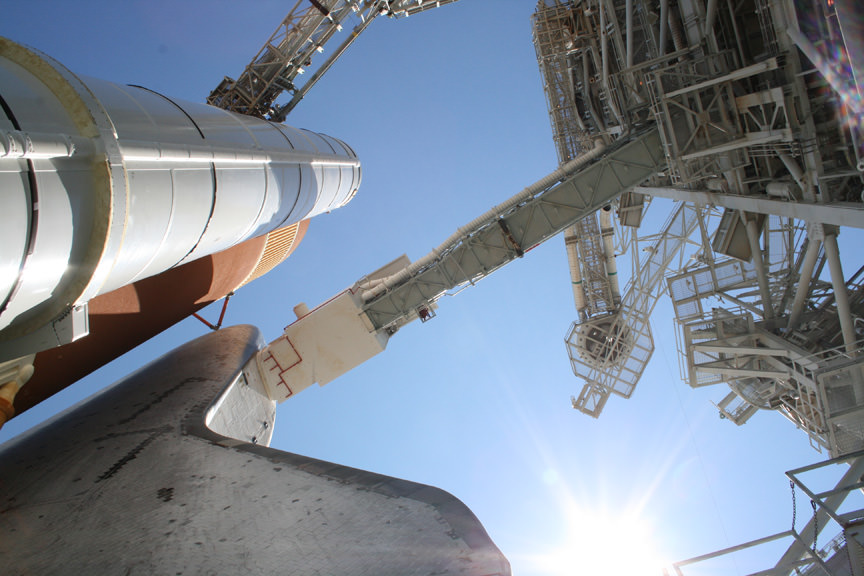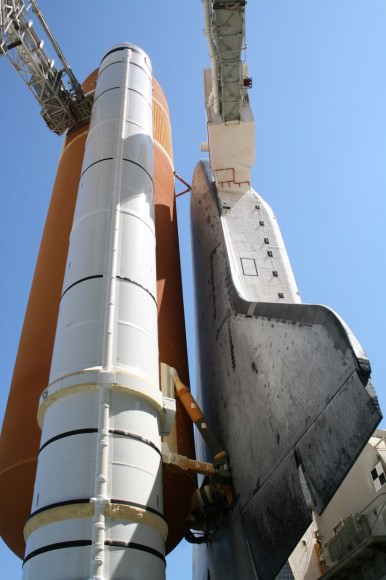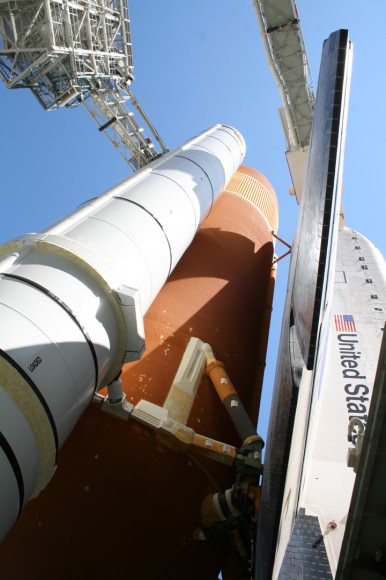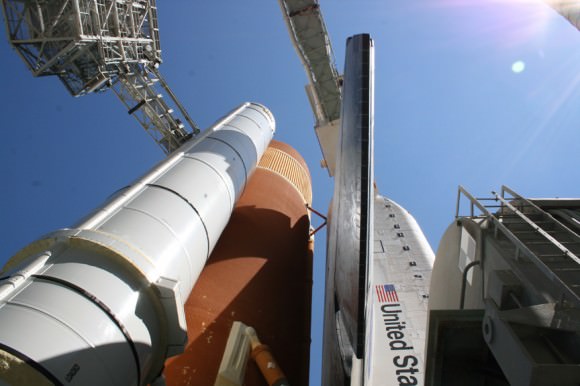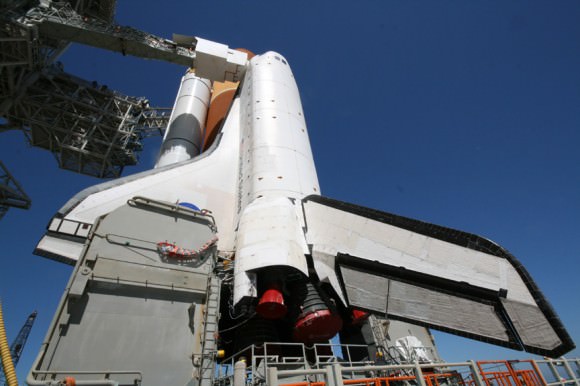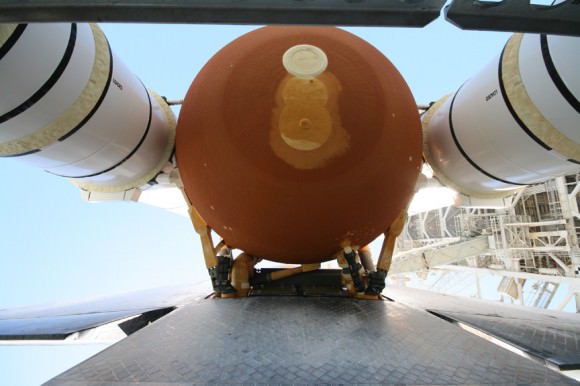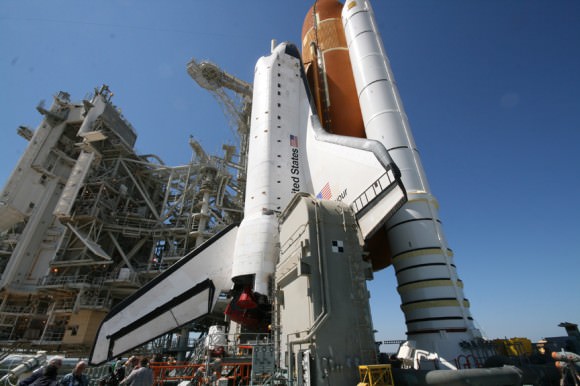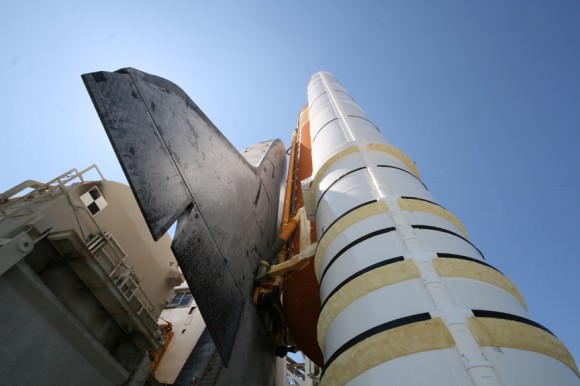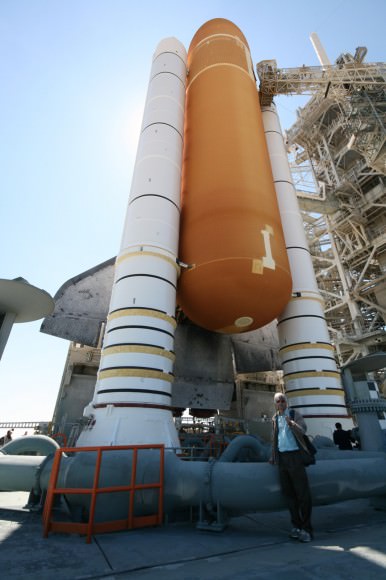KENNEDY SPACE CENTER: Get ready for the ultimate photo op in space – set for the International Space Station joined to Space Shuttle Endeavour and topped off by Planet Earth as the backdrop.
And it’s coming up momentarily because of an unexpected and “unique opportunity” that’s also taking place at nearly the last possible moment in the life of the soon to be retired Space Shuttle program.
On Monday, May 23, Italian Astronaut Paolo Nespoli will snap the first ever photos and video of a US Space Shuttle orbiter while it is simultaneously still docked to the International Space Station, NASA officials just announced on Friday, May 19.
Video Caption: This computer generated animation depicts the view the Soyuz crew will see as they depart from the International Space Station (upper left) on May 23, 2011 at 5:32 p.m. EDT. Italian Astronaut Paolo Nespoli will capture an incredible and first ever imagery of the stacked station/shuttle complex with a space shuttle orbiter; the Endeavour. Bottom view shows side view of the Soyuz departing the ISS. Credit: NASA
Nespoli will capture the dramatic and historic imagery – in a newly devised plan – while he is departing the “Shuttle- Station stack” aboard a Russian Soyuz spacecraft and heading for a landing back on Earth with two crewmates barely 4 hours later in Kazakhstan.
“We have a unique opportunity. We are calling this Soyuz undock with imagery,” said Kenneth Todd, chair of NASA’s space station mission management team. “We are not calling this a Soyuz flyaround or flyabout.”
“This is going to be a great opportunity for the spaceflight community.”
After months of high level international negotiations since the STS-133 mission, NASA and Russian space officials from the space shuttle and space station teams have finally agreed on a arrangement for utilizing a crewed Soyuz vehicle to record the first ever photos showing a shuttle while still docked to the massive orbiting outpost in the same field of view.
The chance to do the shuttle- station photo documentation in this way only became possible when the launch of Space Shuttle Endeavour was scrubbed on April 29 and the resulting delayed launch of the STS-134 mission on May 16 fortuitously afforded an overlapping time period that coincided with the Soyuz TMA-20 crew departure.
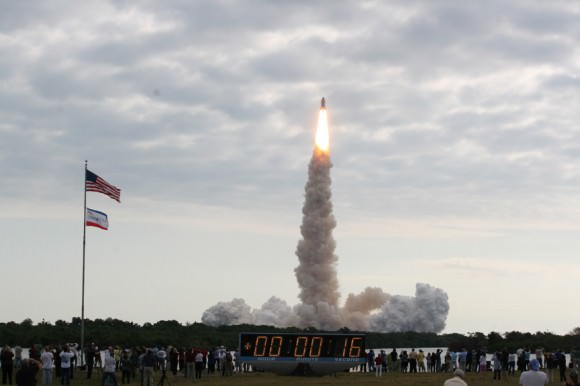
View from the countdown clock at NASA’s Kennedy Space Center. Endeavour has delivered the $2 Billion Alpha Magnetic Spectrometer to the International Space Station. The AMS will search for dark matter, dark energy and antimatter to determine the origin and evolution of the Universe. Credit: Ken Kremer
The photo opportunity will take place under what’s called a dual docked operations scenario whereby the Soyuz is undocked while a shuttle is still attached to the ISS.
“With 100 percent consensus, we approved this change to the baseline mission to go add this photo documentation task as part of the Soyuz TMA-20 undock,” Todd explained.
In order to accommodate the extra time required to accomplish the photo shoot, the Soyuz TMA-20 capsule will undock from the ISS one orbit earlier than originally scheduled, about 90 minutes, at 5:32 p.m. EDT.

on 29 June 1995.
Check out this perspective of what a space shuttle looks like when docked to an Earth orbiting space station. Atlantis is docked to the Mir Space Station on 29 June 1995 during the STS-71 mission. The shuttle has never before been photographed while attached to the Internalional Space Station. The photos of the Shuttle Endeavou and ISS Space Station stack are expected on May 23, 2010. Credit: Roscosmos
Nespoli is departing with ISS Expedition 27 commander and Russian cosmonaut Dimitry Kondratyev and NASA astronaut Catherine “Cady” Coleman. They will be completing a nearly six month stint in space aboard the ISS.”
“After the Soyuz undocks, they will back out to about 200 meters,” explained Courtney McMillan, STS-134 Station Team 4 Flight Director. “You will see they are a little bit above the velocity vector, above the station, and that is to keep the sun out of the pilot’s eyes.”
“After they get to the station keeping point, ISS will begin to maneuver, turning 130 degrees at 0.2 degrees per second.” The attitude was designed to provide the best perspective of the ISS and Endeavour.
“It will take 15 minutes to bring the whole stack around to get a side view and a really good view of Endeavour. This is an unusual attitude for the station to fly during a mated mission and people have done a lot of work to make sure this is a good thing to be doing. They have scrutinized the issue and are very comfortable with the plan.”
The station move will be done using thrusters on the Russian Segment service module – named Zvezda – and the thrusters on the docked Progress 42P vehicle, an unmanned Russian cargo ship. See diagram below.
Nespoli will have to float into the Soyuz vehicles forward habitation module – from his seat in the central descent module – and then snap the photo and video imagery through the modules windows. He will have a direct line of sight to the stack.
Paolo will have roughly 30 minutes time to collect all the imagery of the combined space complex during the photo survey, starting at about 5:50 p.m. EDT.
Then he will float back out of the habitation module, carefully seal the hatches in between and take his seat in the descent module.
The habitation module burns up in Earth orbit after the modules separate in preparation for the Soyuz’s deorbit and scorching reentry into Earth’s atmosphere.
Since the Soyuz will be pitched up during the undocking sequence, breathtaking views of Earth in the background of the “Shuttle-
Station stack” are expected.
The goal is to get good archival imagery of the space station stack with the shuttle attached. In addition to the gee whiz factor there are good reasons from an engineering perspective to record this imagery to assess the condition of the orbiting complex, NASA managers said.
“Future generations will look back on their history and look back at what we accomplished between these two very, very large programs – the shuttle and the space station – and realize it was amazing what we accomplished with the technology available at the time.”
“These pictures will be in textbooks to show what we did”, said Todd.
Exactly when the digital photos and video will be available for all to see is still to be determined. NASA and Russian space officials are discussing the details of when and how to distribute the imagery. The Soyuz is not equipped to transmit the imagery in real time.
“We hope to start seeing the photos and videos within a day of landing”, said Todd.
Paolo has snapped many gorgeous shots during his stay in space, including these of an Ariane V launching the European ATV cargo craft from French Guiana.
Go Paolo !
Read my story about the Final Shuttle mission, STS-135, here:
Atlantis Rolls to Vehicle Assembly Building with Final Space Shuttle Crew for July 8 Blastoff
Read my related stories about the STS-134 mission here:
Endeavour Blasts Off on Her 25th and Final Mission
Endeavour Unveiled for Historic Final Blastoff
Looking to the Heavens with Endeavour; Launch Pad Photo Special
Endeavour Astronauts Arrive at Cape for May 16 Launch
NASA Sets May 16 for Last Launch of Endeavour; Atlantis Slips to July
Endeavour’s Final Launch further delayed another Week or more
On the Cusp of Endeavour’s Final Flight
Brush Fires Erupt at Kennedy Space Center during Endeavour’s Last Countdown
Commander Mark Kelly and STS-134 Crew Arrive at Kennedy for Endeavour’s Final Flight
President Obama to Attend Endeavour’s Last Launch on April 29
Shuttle Endeavour Photo Special: On Top of Pad 39A for Final Flight
Endeavour Mated to Rockets for Last Flight Photo Album
Endeavour Rolls to Vehicle Assembly Building for Final Flight
